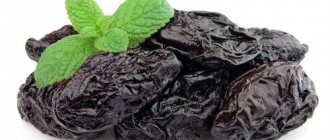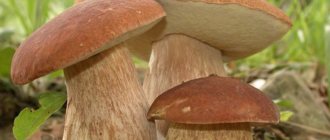From time immemorial, Ivan tea has been known not only for its pleasant aromatic taste, but also for its amazing healing properties, which make it indispensable in the treatment of many diseases. Recently, this drink has been gaining more and more popularity; people buy ready-made tea in stores or prepare it themselves, referring to numerous instructions on the Internet.
The process of preparing tea at home is quite labor-intensive, but if all the necessary conditions are met correctly, then it is quite possible to prepare fireweed tea yourself, fermented at your own discretion.
However, many people overlook the fact that storing Ivan tea is no less important than the process of preparing it and subsequent brewing. During storage, tea can also deteriorate, lose its beneficial properties, or lose its taste. To avoid this, you need to follow a few simple tips.
What is Ivan-tea
The leaves of the plant can be found almost throughout Russia, since its seeds easily scatter over long distances. Most often it appears near bodies of water, in coniferous forests, in garden plots and even near asphalt roads.
The leaves of this plant were used to treat ailments in times when medicines had not yet been invented.
The botanical name is Fireweed angustifolia, but popularly Ivan tea is called Mulberry, Elushnik, Ivanov tea, Red color, Weeds, Koporye tea, willow grass or fireman. It takes root well in areas of fires; other plants actively grow in areas with fallen fireweed leaves.
You can find Ivan tea everywhere, since its seeds easily scatter over long distances, populating large areas.
The main thing that makes Ivan tea stand out is its composition, which differs from other caffeine-containing drinks. It does not contain harmful elements such as caffeine, oxalic acid or purine bases that disrupt metabolism.
To make the drink from this plant better quality, a special technology for its preparation is used.
This unique herb contains a large number of beneficial substances that have a positive effect on the human body:
- vitamin C (large amounts collected from the above-ground part of the plant);
- B vitamins;
- organic acids, gallic acid;
- pectin, lectins, tannins (up to 20%);
- macro- and microelements (copper, iron, manganese, phosphorus, calcium);
- polysaccharides, coumarins, phytosterols.
Fermentation is the process of fermenting the leaves of a plant used to prepare a drink.
Tannins and a large amount of mucus have an enveloping effect. Tannin has anti-inflammatory and antispasmodic properties, and plant fibers improve the functioning of the digestive system. The dried herb is used as an analgesic and sedative. Regular consumption helps solve problems with the genitourinary system and acts as a prevention of tumor growths. In addition, the tea drink improves blood composition, reduces intoxication in the body, normalizes blood pressure, relieves insomnia, and effectively fights viral diseases.
The procedure is performed over a period of several hours to several days.
For reference! Most of the healing properties of Ivan tea are similar to baking soda, since the herb often grows on the ashes of peat bogs and forest fires, which is also alkali.
Beneficial features
Since ancient times, people have known the beneficial properties of fireweed. Back in the Middle Ages, such tea was served at the royal table and exported to other countries. Ivan tea has a large number of healing properties:
- anti-inflammatory effect, fireweed has a very strong effect compared to other medicinal plants;
- stops the development of tumor cells, is not used to treat cancer, is suitable for prevention;
- enveloping effect, helps cope with gastritis or gastric ulcer;
- strengthens the walls of blood vessels, has a beneficial effect on the functioning of the heart;
- is a mood modulator;
- improves sleep, relieves insomnia;
- has a positive effect on the nervous system, improves blood circulation, and accelerates brain activity.
The beneficial properties of fireweed do not end there. The plant has a truly medicinal effect. In the Middle Ages, fireweed was used as a panacea for all diseases.
See also
How long can minced meat be stored in the refrigerator, methods and expiration dates
Important! In folk medicine, angustifolia fireweed is still used to treat many diseases.
Benefits and harms of Ivan tea
In Ancient Rus' they believed that the benefits of Ivan tea were simply invaluable. More than 90% of all diseases known at that time were treated with fireweed infusion. The remaining percentage of pathologies were treated with other beneficial herbs and honey; at that time there were no medicines and people had no choice but to use the gifts of nature.
But even today, with a big leap in the field of pharmacology and the medicinal system, Ivan-tea has not lost honor. It is widely used in the treatment of various pathologies. Even professional doctors give recommendations to their patients about taking fireweed infusion as an adjuvant as part of complex therapy for various diseases.
Traditional recipes using Koporye tea are used today to strengthen the immune system and get rid of the symptoms of colds, flu and ARVI. Many men use Ivan tea for preventive purposes or to get rid of potency disorders, prostate adenoma and other “male” pathologies.
A large number of microelements saturates the body with strength and energy, allowing a person to feel calmer, more confident, and full of energy. Tea perfectly tones and sets you up for work, so it is recommended to drink the drink in the morning, immediately after waking up, instead of coffee, which only brings harm.
However, the product also has some contraindications that you should pay attention to when using raw materials for brewing the drink for the first time:
- individual intolerance (after the first use of Ivan-tea, you need to pay attention to the body’s reactions, if everything is in order, you can use the product subsequently);
- allergic reactions (people prone to allergies to natural products should take such an effective drink with caution);
- gastrointestinal pathologies (with prolonged use, fireweed infusion leads to stomach upset in some people).
Otherwise, the plant has virtually no contraindications. It can be consumed an unlimited number of times per day, if the body reacts normally to such a rich saturation of nutrients.
Important! When planning to introduce a new product into your diet in the form of a drink from Ivan tea, you need to carefully monitor your own reaction. If the body does not accept such a remedy or signs of allergies appear, it is better to stop using the infusion of this herb.
Ivan tea has been used for medicinal and preventive purposes for more than a century. During this time, people have undoubtedly become convinced that this is a truly useful and high-quality product that helps cope with some diseases. Among other things, Ivan tea adjusts the normal functioning of the body, restoring metabolic processes, making a person calm and self-confident. Its use is indicated for various ailments, as well as for preventive purposes to normalize blood pressure, blood circulation, give strength and saturate with energy.
Tea that warms and heals
During the cold season, the risk of hypothermia increases. Frost and chilly wind chill to the bones, frozen feet cause colds. A cup of hot fireweed tea with linden honey will help you avoid unpleasant consequences. The main thing is not to delay taking the healing drink, prepare and drink it at the first opportunity. When the temperature rises, a warm infusion will help you sweat and remove toxins.
Fireweed has anti-inflammatory and antiseptic properties and helps in the fight against germs. Gargling with a strong infusion is useful for pharyngitis, sore throat, and acute respiratory infections. Washing the nasopharynx is recommended for a runny nose, and poultices are used to treat catarrhal otitis. Painful symptoms are often accompanied by increased blood pressure (BP) and headache. Ivan tea does not contain caffeine; moderate intake of a weakly brewed drink gently reduces blood pressure.
In winter, diseases of the musculoskeletal system worsen - arthritis, arthrosis, gout. Aching pain in the joints does not allow you to sleep. A warm decoction of fireweed relieves the condition. Taken internally, it promotes sleep. External compresses or lotions alleviate pain.
In cold weather, the genitourinary system is especially vulnerable. In women, even one-time hypothermia can cause cystitis or inflammation of the appendages (adnexitis). Men suffer from manifestations of prostatitis. Fireweed infusion cleanses the urinary tract of microbes and alleviates the general condition.
Ivan tea is a source of nutrients
The popularity of the drink is associated not only with its pleasant, unique taste. It has been noticed that regular consumption of fireweed tea during the winter cold protects against frequent colds and increases the body's resistance.
Healing abilities
The plant contains vitamins C and B, many different minerals: potassium, manganese, iron, copper, phosphorus, calcium. The juice contains lectin, pectin, organic and tannins. All of these substances, once inside the human body, have an anti-inflammatory effect, relieve spasms in various organs and remove toxic compounds. Fireweed is used to treat:
- gastritis;
- ulcers;
- gastrointestinal diseases;
- cleansing the body.
Fireweed serves as an excellent sedative, improves sleep and normalizes the functioning of the nervous system. It is recommended to drink for people who suffer from panic attacks and nervous disorders.
The plant contains antioxidants that block the action of free radicals, so fireweed is used for preventive purposes against cancer. The plant enhances the body's immune function and can even increase life expectancy. A course of herbs must be taken if a person often suffers from viral diseases (more than once a year) or experiences constant weakness and malaise.
Other indications for the use of fireweed are:
- conjunctivitis;
- otitis;
- sinusitis;
- anemia;
- kidney problems;
- herpes;
- inflammation of the pelvic organs;
- high blood pressure;
- arrhythmia.
When used regularly and correctly, fireweed does not cause harm, but in high concentrations it significantly lowers blood pressure and causes intestinal upset. For men, frequent use of medicinal herbs causes problems with potency.
Attention! Fireweed is contraindicated for use by people who suffer from thrombosis, varicose veins and thrombophlebitis.
Collection of fireweed leaves.
- The leaves are collected in June-August from the beginning of fireweed flowering until it fluffs up. It is necessary to collect in dry weather, away from roads and polluted places, preferably in shaded places along the edge of forest clearings. The leaves of such plants are more tender and juicy, they curl more easily and ferment better, and the tea they make tastes better.
- It is convenient to collect fireweed leaves by holding the stem near the peduncle with one hand and running the other hand down to the middle of the stem (in the photo this part of the stem is limited by red ribbons). The lower leaves are left on the stem because they are rougher than the top ones. It is advisable to leave 3-4 tiers of leaves under the flowers; the plant needs them to lift moisture from the roots and collect dew. This method of collecting leaves does not harm the plant - it continues to bloom and produce seeds.
- So, for the next batch of fireweed tea, I collected a full bag of leaves (1.2 kg)
I recommend collecting fireweed flowers separately and then adding them to fireweed tea.
Distinctive features of the plant
It is not difficult to recognize fireweed flowers. Plants reach a height of 50-200 cm. The stems are dense, cylindrical in shape, pink in color. The leaves are lanceolate, elongated, green with a brown tint. The flowers are bright pink or crimson. They consist of 5 petals, with stamens of the same color located in the center.
Plants grow in families, and in the wild they are found in entire glades. They are easily recognized by their bright colors. The biological name of the plant is fireweed. The flower is perennial, growing in one place for several years. Flowering lasts from June to September. For tea, the flowers are collected in bloom in mid-summer.
Ivan-tea withering of leaves.
- This stage is needed to make it easier to curl the leaves in the future. The collected leaves are inspected and damaged ones are removed. There may also be snails, so we remove them too. It is better not to wash the leaves before withering, because... beneficial microorganisms involved in the fermentation process can be washed away. Then the leaves are laid out in the shade on cotton or linen in a small layer (3–5 cm).
- On average, the process takes 4-8 hours, depending on humidity and air temperature. On a dry, sunny day the process goes faster, on a rainy and cool day it takes longer (a day or more). Therefore, you need to control the process and periodically stir the leaves every hour so that they wilt evenly. The readiness of the leaf is determined by squeezing the leaf in half. If, when folding the sheet, you feel a “crunch” of the central vein, then the sheet is not yet ready. If most of the leaves do not “crunch,” then it’s time to move on to the next step.
- If the leaves are already wilted, and I don’t have time to deal with them, then I wrap them tightly in the same fabric on which they dried. This way the leaves can lie there long enough until we are free.
Rolling and rolling with a rolling pin
- For small amounts of herb, rolling the leaves by hand or rolling them with a rolling pin will work. To do this, each leaf is taken in hand and twisted into spirals. Using a rolling pin, roll out the lumps of leaves with a rolling pin and hold them tightly together.
The resulting “snails” are placed in a glass jar and covered with a nylon lid, and left for fermentation.
Twisting.
Now the leaves need to be twisted. This is quite painstaking work, especially if the volumes are large. But this is necessary for the leaf cells to break and release juice. To make the task easier, beginners are recommended to use a meat grinder.
curled leaves
When this is not possible, take the sheets and rub them between your palms so that they eventually curl into a “sausage.” This must be done until a little juice comes out.
Correct twist
Fermentation
Fermentation is the fermentation process that produces beneficial enzymes. This happens when optimal conditions are created. After the procedure, the leaves of fireweed will acquire a certain taste.
Lightweight
The first stage of fermentation lasts 3-6 hours. It leaves behind a pleasant floral, sweet scent. When brewed, the tea emits a bright sweet aroma, the taste is delicate, light, sweet.
Average
The second degree lasts 10-16 hours. A longer process produces a sour taste. The tea will be tart and the aroma will be rich. It should be mixed with regular green or black tea.
Deep
The longest fermentation lasts 20-36 hours. After it, the herb has a tart, bitter taste and a slight floral smell. It is added to tea compositions in small quantities. It is not very pleasant to drink in its pure form.
Important! The shorter the fermentation lasts, the more pleasant the Ivan tea tastes. It's better not to hold on than to over hold.
Signs of corruption
You can determine that fireweed has gone bad by the following signs:
- A musty smell, reminiscent of long-stayed hay.
- Smell of mold.
- Traces of pest damage.
- Formation of mold deposits.
- Bitter taste of the drink (provided that the herb was properly prepared).
It is not recommended to brew missing fireweed tea. It is also undesirable to make alcohol tinctures from it. It can develop harmful microorganisms and fungi , which can be harmful to health. It is better to throw away such a product. If there is a lot of it, it can be composted, which is important for people involved in agriculture.
Why and how to ferment Ivan tea at home
Fermentation is an important stage in preparation for using beneficial herbs at home. Fermentation is the process of fermenting the collected leaves. It takes from several hours to several days.
The duration of the process, as well as the temperature used for this, affect the color, aroma, and taste of the drink.
The procedure is necessary because the beneficial substances of fireweed mainly have an insoluble structure. Fermentation helps them dissolve for better absorption by the body.
If you immediately brew collected and dried leaves that have not undergone fermentation, the real taste and aroma of the plant will not be revealed.
If the fermentation process is not stopped in time, the leaves of the plant may become moldy.
Ivan tea, fermentation at home:
- During processing, chemical transformations occur in the plant cells. The interaction of enzymes with oxygen and oxidation begins, improving aromatic qualities.
- Microorganisms are activated and prebiotics begin to multiply.
- As the leaves curl, prebiotics interact with the sap, actively feeding.
- The final stage of processing is the leaves are dried.
Important! After harvesting the herb, do not wash the leaves because beneficial microorganisms necessary for fermentation may be removed.
This procedure is also very important, since under-dried leaves can spoil in the packaging, and over-dried leaves will acquire a burnt taste.
How to tell if fermentation is complete
The raw materials prepared by one of the methods are placed in containers, covered with a damp cloth, and placed in a shaded room at t = 24-26°C. Air temperature is an important element in the fermentation procedure. If it is insufficient, then fermentation will stop; if it is too high, the tea will not have the proper taste and aroma.
The duration of the procedure is no less important. There are 3 degrees of fermentation:
- Easy. The leaves are fermented for 3 to 9 hours. They are ready when a light floral-fruity aroma begins to emanate from them. The taste of this tea is soft, with a delicate taste and smell, and the color is light yellow.
- Average. Fermentation takes place for 10-19 hours. The tea made from such leaves is slightly tart, with a pronounced aroma and slight sourness, and its color is green.
- Deep. The fermentation period varies from 20 to 36 hours. The taste of tea is tart, the color is dark, the aroma is fruity.
When choosing longer degrees of fermentation, it is necessary to remember that the longer the fermentation time, the greater the likelihood of mold appearing in the raw material.
Best before date
According to technical conditions, Ivan tea can be stored for no longer than two years. In practice, some people store it for 6 or even 10 years. They claim that since fireweed is not just dried, but fermented, even while in a closed container, processes called dry fermentation occur in it. This only improves the taste and smell.
To store fireweed correctly, you should take into account factors such as temperature and humidity, ensure there is no direct sunlight and choose a suitable container. In such conditions it will be perfectly preserved for a long time.
Drying fermented Ivan tea
This is the final procedure. Fermented leaves can be cut into smaller pieces. Then they are laid out on a baking sheet covered with parchment paper in a layer of no more than 1 centimeter. The raw materials are loosened a little to break up possible lumps.
Place a baking sheet with leaves in an oven preheated to 90° for 2 hours. Then the temperature is lowered to 50° for final drying. The raw materials must be constantly mixed for uniform drying. The tea is ready when the leaves darken and begin to break.
Important! Drying of raw materials should be done with the oven door open.
After the leaves are dried in the oven, they must be left in the room for a while to cool. Then the tea is poured into fabric bags, which are hung in the open air (ventilated balcony, loggia). Well-dried tea should rustle when you shake the bag.
In the future, fireweed tea is stored in glass, birch bark, and tin jars. From above they are closed with lids made of appropriate material. The place in which the containers are kept must be dry and dark. This could be, for example, a pantry or kitchen cabinet.
How to cook
Dried herbs must be brewed properly. Its amount depends on the nature of the disease. Each disease has its own rules for intake and breeding:
- For gastrointestinal diseases, ulcers and gastritis, brew 20 grams of herb in a glass of boiling water. Infuse the mixture for no more than an hour, then filter through cheesecloth and drink in 3-4 doses during lunch or dinner. The course of treatment is a month.
- For anemia, weak immunity, general malaise, take 1 tablespoon of fireweed tea per 200 milliliters of hot water and brew for half an hour. Then the resulting mixture is drunk 2-3 times throughout the day. The course of treatment is 3-4 weeks.
- For sore throat, fireweed tea is used for rinsing. Take 2 tablespoons of dried powder per glass of hot water and leave for 10-15 minutes. Then gargle 2-3 times a day for 5-7 days.
- To improve sleep and normalize blood pressure and heart rate, prepare a decoction: you will need a tablespoon of fireweed for 200 milliliters of water. Heat the mixture over the fire until it boils and boil for another 10 minutes. Then cool and drink the resulting decoction at night or in the evening in 2 doses for 2 weeks.
Storage conditions
How to properly store dried Ivan tea? Like any dry grass, this material is afraid of dampness. Therefore, for their supplies they choose a dry, dark place with a temperature of +10°C - +25°C. It is better to use a glass or tin container with a tight-fitting lid. The jar must be labeled so as not to accidentally confuse its contents with other herbs.
- The shelf life of dry Ivan tea will not be shortened if you keep it in a tightly tied canvas bag. Air humidity at the place of its storage should not exceed 50%. A dry basement and cool pantry are good places for dried plant material.
- The shelf life of dry Ivan tea is 2 – 3 years. Supplies should be periodically checked for pests and unpleasant odors.
- Dried fireweed herb purchased at a pharmacy is usually not intended for long-term storage. More airtight packaging, such as glass containers with a tight lid, will help correct the situation.
How long Ivan tea can be stored depends on the correct implementation of all stages of raw material procurement and subsequent compliance with storage conditions. If everything is done correctly, you can improve your health all year long with the help of a healing drink with excellent taste.
Ideal container for Ivan tea
In stores, fireweed is most often sold either by weight, packaged in craft bags, or in factory packaging - then it is in a sealed plastic bag, which is placed in a thin cardboard box. Neither the first nor the second option can be called ideal, so the grass should be transferred to a more suitable container immediately upon arrival home.
You can learn about the advantages and disadvantages of all packages in which Ivan tea is stored at home from the table:
| Glass | It does not allow moisture and air to seep inside the jar, which ensures better preservation of fireweed. | It transmits light, which, firstly, promotes the development of bacteria, and secondly, has a bad effect on the taste of fireweed - chemical reactions are triggered in it, as a result of which aromatic substances are destroyed. |
| At the same time, the glass does not release the molecules of essential oils - they remain inside the package, so the smell and taste of the herb do not change for a long time. | ||
| In addition, this material is chemically inert - it does not react with any of the components of fireweed. | ||
| Paper | The advantages of paper include its availability and low cost. It is completely unsuitable for long-term storage of dried herbs. For example, you can wrap it around a glass container to protect its contents from light. | Paper that is not intended for food use may contain harmful components. But the main disadvantage of this material is its ability to transmit and accumulate moisture. If the room where fireweed is stored is too damp, the herb will become moldy and become unsuitable for brewing. |
| Plastic | Does not allow moisture to pass through and does not allow the aroma to evaporate. | Creates a “greenhouse effect”, which negatively affects the quality of the drink. In addition, most plastics are transparent. |
| Textile | Linen and cotton bags can only be used to store fireweed in rooms where the humidity level is never too high. It is also advisable to place the bag in a small cabinet where there are no foreign odors - this will create additional protection against moisture penetration and prevent the smell of the grass from “fizzle out.” | It allows and absorbs moisture, thereby shortening the shelf life of the herb, and also allows molecules of aromatic substances to seep out, causing dry leaves to lose their aroma. |
| This material is only suitable for short-term storage - no more than six months. The fabric has no advantages as such. | ||
| Porcelain, clay | Limits the access of sunlight inside the container. | The only drawback is the lid - it is rarely sealed, which means moisture penetrates into the container. Fireweed also loses its pleasant aroma. |
| Provides a natural level of humidity. | ||
| Unglazed products can allow air to pass through, but this does not affect the quality of fireweed tea during long-term storage. | ||
| Metal | Boxes and jars made of food-grade tin are ideal for storing fireweed. They retain all the qualities of the grass, and their separate advantage is the presence of a tightly closing lid. | If a coffee tin is used, it must be thoroughly rinsed and dried to prevent the tea from becoming saturated with foreign odors. |
It turns out that you can store dried herbs either in a glass jar wrapped in paper or in a clay vessel. But the best thing is in a food-grade metal tin.
Description
In Russia it grows in most regions of the country. In the 17th century, in the village of Koporye near St. Petersburg, they began to make tea, which was called “Koporsky” after the area where it was produced. Later, a legend appeared about the ancient Russian origin of this drink.
It was invented in the 90s of the last century for advertising purposes by its famous manufacturer Alexander Grachev. To increase profits, he began mixing fireweed leaves into expensive Chinese varieties. This is reflected in Dahl's dictionary. In it, Koporye tea was defined as a counterfeit drink.
The name “Ivan-tea” appeared later. This is how foreign merchants began to call Koporye tea, hinting at the enterprise of the Russian Ivan, who was engaged in counterfeiting the Chinese drink. The scale of its counterfeiting became so great that in June 1816, the Committee of Ministers of the Russian Empire was forced to issue a special document banning the production of counterfeit goods.
How it grows
Fireweed flowers
Fireweed
Thanks to the unique healing properties of fireweed, fireweed tea has gained its own popularity. Modern manufacturers make it without adding Chinese varieties. Many connoisseurs of this plant make their own preparations.
Fireweed likes to grow in moist, sandy soil. Its densest thickets can be found near reservoirs, on forest edges, clearings and railway embankments. It likes to grow along roads and in ditches. Ivan tea can grow up to 2 meters in height.
| Name | Description |
| Leaves | The shape is wedge-shaped, with a sharp end. The underside is pale green, the top is dark green. Length 5–20 cm. The veins covering the surface of the foliage extend from the central vein at an angle of 60–900. |
| Inflorescences | They are located on the tops of hard, densely leafy stems and resemble a panicle. It can include from 10 to 100 or more large flowers that open one by one. They can range in color from bright pink to purple. Fireweed with white flowers is also found in nature. |
| Fruit | They have the shape of oblong boxes, up to 6 cm long. Each of them can contain up to 20 thousand down-covered seeds. Due to their lightness in nature, the wind carries them over long distances. The fruits ripen in mid-August. |
| Roots | A well-developed root system is colored red. The taproot can reach a length of up to 1.5 m. It is popularly called “redneck”. |
The flowering period of fireweed is 1–2 months. At this time, each flower secretes from 0.5 to 12 mg of nectar.
Common Mistakes
When preparing medicinal herbs for the winter, some people make mistakes:
- Do not wash fireweed leaves before rolling, as this will disrupt the fermentation process;
- the first day after collecting raw materials, they give it time to wither;
- Ivan tea overdried in the oven or in the sun loses its properties;
- drying is carried out strictly according to the instructions, stirring the leaves periodically;
- leaves, roots and petals are prepared separately;
- Fireweed should be stored in a glass container in a shaded place.
Sources
- https://severdv.ru/sovety/samye-luchshie-sposoby-fermentaczii-ivan-chaya/
- https://travaks.com/ivan-chaj/kak-prigotovit-ivan-chaj/
- https://dary-prirody.su/chem-polezen-ivan-chaj-zimoj/
- https://horosho-zhivem.ru/ivan-chaj-fermentatsiya/
- https://hozzi.ru/hranenie/ivan-chaj
- https://zen.yandex.ru/media/id/5c88e797d7bf8500b3ecf14b/5c9483baa328fe00af70f8fe
- https://ogorod-bez-hlopot.ru/xranenie-i-pravilnoe-zavarivanie-ivan-chaya.html
- https://kakxranit.ru/medicina/kak-xranit-ivan-chaj.html
- https://mschistota.ru/storage/kak-xranit-ivan-chaj.html











